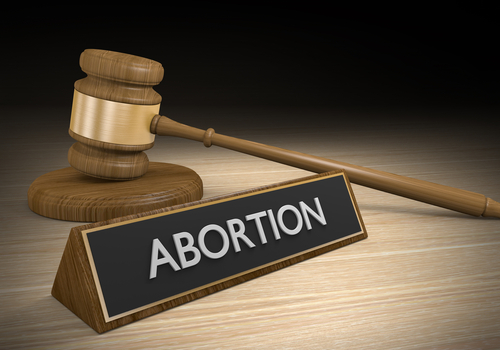5th Circuit judge blasts abortion procedure as 'barbaric' in dissent

Image from Shutterstock.com.
Judge Don Willett of the 5th U.S. Circuit Court of Appeals at New Orleans has made clear his distaste for the most common second-trimester abortion procedure in a dissent filed last week.
Willett graphically described what he sees as a “barbaric” second-trimester dilation-and-evacuation abortions while criticizing the majority for using language that is “camouflaging things in anodyne, sanitizing abstractions.”
The panel majority struck down a Texas law that requires physicians performing dilation-and-evacuation abortions to first ensure that the fetus dies in utero. The majority said the additional procedure is medically unnecessary, and the law unduly burdens a woman’s constitutionally protected right to obtain an abortion before viability.
The majority ruled Oct. 13, but the court posted a modified opinion Oct. 22 that included Willett’s dissent, Law360 reports. Willett is an appointee of President Donald Trump.
The majority said dilation-and-evacuation abortions are the most common procedure after the first 15 weeks of pregnancy. To perform the procedure, the physician dilates the cervix, then uses suction, forceps or other instruments to remove the fetus. Because the fetus is usually larger than the dilated cervical opening at 15 weeks, the fetal tissue usually separates as the physician removes it, the majority said.
Willett used other words to describe the procedure, referring to the description in the Texas law.
Willett wrote: “A physician extracts from the womb what moments before had been a living ‘unborn child’—using forceps, scissors or a similar instrument that ‘slices, crushes or grasps’ fetal body parts one at a time. Piece by piece. Arm by arm. Leg by leg. And as the abortion doctor ‘cut[s] or rip[s] the piece from the body’—a torso, a spine, a rib cage—he places each body part on a tray (or in a dish) to keep inventory and ensure that nothing is left behind. Sometimes the heart is still beating on the tray. The fetus dies just as an adult experiencing corporal dismemberment would—by bleeding to death as his or her body is torn apart.”
Willett said the majority “uses gauzy, evasive language to minimize the reality of D&E.”
“Civilized society has long recognized that death and dignity should coincide,” Willett said as he began his opinion. “It’s why we dress up for funerals and venerate the heroes of hospice and palliative care. It’s why we derive comfort when we hear that a loved one died peacefully in their sleep; the loss, no less sorrowful, is leavened with solace knowing that someone dear to us didn’t suffer. It’s why babies born pre-viability receive medication to ease their passing. Human dignity should prevail even when—especially when—human life slips away.”



